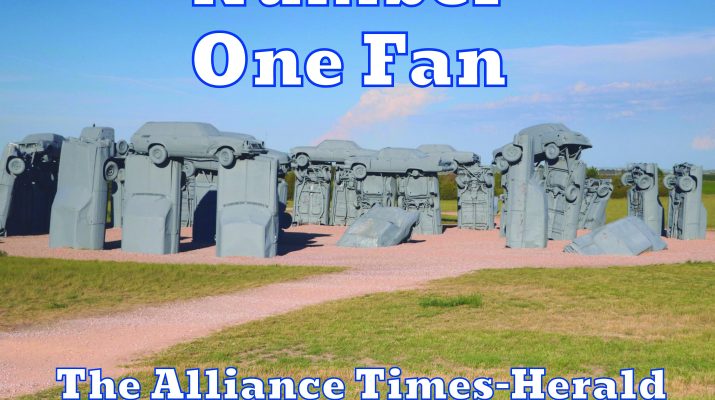At this point in my life 50 years ago, I had entered the eighth grade at Raymond Central Junior & Senior High School located a few miles north of Lincoln.
What was the most important aspect of my life?
You are correct.
Big Red Football!
Which included Cornhusker apparel.
My stock of Cornhusker football shirts had grown to ten, so wearing a different Nebraska Cornhusker shirt every day to school for three months was a cinch.
My mother had sewn two of the shirts. She purchased red fabric that was covered with white “Go Big Red” lettering and white fabric covered with red “Go Big Red” lettering.
My mother was an incredible seamstress. She learned to sew at age five when she made clothes for her dolls.
Outside of her family, there was nothing Mom loved more than sewing. She made dozens of shirts, pants, jackets, and other garments during my youth. She also did so out of necessity, because sewing our clothes was cheaper than buying them from a store. Plus, Mom’s homemade clothes lasted longer. Although she would never call herself one, Mom became a commercial seamstress in the mid-1970s.
Raymond Central Home Economics teacher, Mrs. Carol Schmucker became an advertising showcase as folks wanted to know where she bought the clothes she donned. When Mrs. Schmucker explained they were handmade by Phyllis Horn, garment requests began rolling in.
Mom didn’t get rich, but every dollar helped.
Women of all ages would visit our home, and many were attractive, young brides-to-be who requested Mom construct their wedding dresses and bridesmaids’ gowns. Other visitors to Mom’s sewing parlor included several of the Raymond Central cheerleaders, who requested Mom alter their uniforms.
Some of the guys in my class learned of these visits and were curious if I was ever allowed in the fitting room to assist. I assured them I wasn’t and hadn’t even entertained the thought. Usually, when women (and girls) arrived at the house for dress, gown, and skirt babble, I made a beeline to the basement to watch television.
Despite my insistence on donning a Nebraska football shirt every day during the autumn of 1972, life came crashing down on the night of Saturday, September 9.
Bob Devaney’s Cornhuskers entered the 1972 season rated No. 1 but had to play its first game on the road in the Los Angeles Coliseum against the UCLA Bruins. The Cornhuskers were sporting a 32-game unbeaten streak, which began with a 21-17 victory over Kansas in October 1969. The Jayhawks’ head coach at the time was Pepper Rodgers, who was now preparing UCLA to meet the mighty Cornhuskers.
My anxiety concerning an NU loss heightened when KFAB legend Lyell Bremser came on the air and shared the fact that NU’s 32-game unbeaten streak started with a Pepper Rodgers team and could certainly end at the hand of a Pepper Rodgers team.
I vividly remember the start of the streak. My brother and I were cleaning cattle stalls in our barn when Lyell announced Nebraska’s winning touchdown, a two-yard run by Jeff Kinney.
Along with his great broadcast talents, Lyell also proved he was psychic.
Nebraska lost, 20-17, as the Bruins kicked a 30-yard field goal with 22 seconds remaining in the game.
Thanks to Nebraska’s four fumbles and two pass interceptions, the Bruins, led by quarterback Mark Harmon (who would later star on the television shows Chicago Hope and St. Elsewhere) provided me my first taste of a Cornhusker defeat.
The flavor soured, even more, the following Monday morning when my classmates met me at my locker.
Let the heckling begin.
The fact of the matter was that Nebraska committed too many turnovers, and UCLA rattled the cage of new Cornhusker quarterback David Humm, who replaced the graduated Jerry Tagge. Running back Gary Dixon was also a poor reproduction of Jeff Kinney, who the Big Red also had lost via graduation. Dixon didn’t have Kinney’s ability to break tackles, and he fumbled a lot. Cornerback Jim Anderson and safety Bill Kosch had also graduated, which meant rebuilding the defensive secondary. To put it in simple terms: Nebraska had lost too many players in too many key positions and committed too many turnovers while playing in a hostile environment.
It was a perfect recipe for defeat.
Despite a taste that required a bib to prevent the upchuck of defeat from staining one of my Go Big Red shirts, appropriate Cornhusker apparel made its way onto my skinny adolescent torso the morning of Monday, September 11, 1972.

